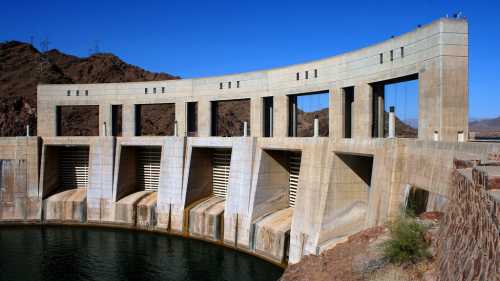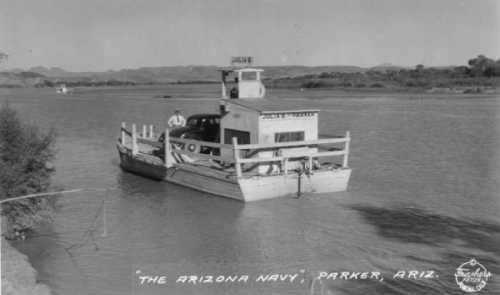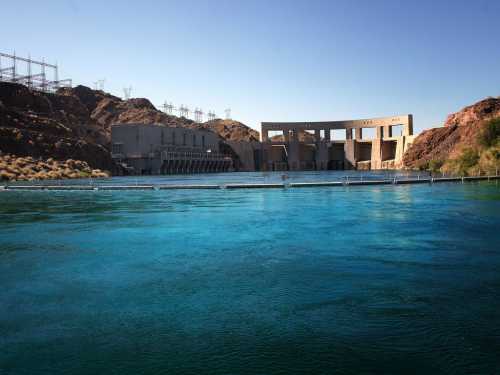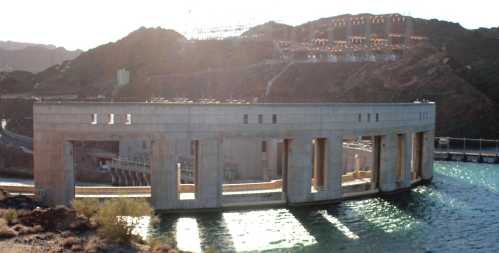Arizona is no stranger to strange. In fact, since our state was a well-known setting for Wild West events and some controversial politics, so these kinds of bizarre information tidbits shouldn't be anything new, right? Well, you might be a bit surprised by an event that happened back in 1934 which probably could only happen right here in Arizona! Some may wonder if there are any major dams in Arizona, and the answer is yes! Of course, there's the iconic, shared Hoover Dam, but Parker Dam in Arizona has its own claim to fame, as well. You'll find this towering piece of architecture right on Lake Havasu.
Way back in 1934, a little over two decades after we were granted statehood, Arizona got into a bit of a scuffle with the federal government and California. The catalyst of that argument? The construction of Parker Dam, which was planned to divert water from the Colorado River into California.
These days Parker Dam, which sits between Lake Havasu City and Parker, is a spot known for camping, fishing, and water activities. But at the time of construction, it was an affront to Arizona's still-new sovereignty. It wasn't just the movement of water that was challenged but also the fact that no one bothered asking Arizona for permission to build the dam.
Then-governor, Benjamin B. Moeur, immediately set to work to correct this in a move that might have been a little extreme and in a manner not prudent at all.
In November 1934, Moeur declared martial law on Arizona's side of the river and immediately sent out members of the state National Guard to patrol the waters. Newspapers sensationalized the event with presumptions that war was looming and statements that "militiamen" were arriving on scene.
In total, 40 members who became known as Arizona's "Navy" rode out on two riverboats while 20 gunners stood along the banks to prevent further construction from happening. They didn't, however, look like the impressive naval boats you're used to seeing. Instead, they were small, wooden ferries that typically carried passengers and their luggage across the river. This didn't stop the little naval fleet. They managed to still appear a mighty intimidating force, at least until one of the little boats got stuck during a reconnaissance mission and had to be freed by the Californian enemies (construction workers).
Nevertheless, that show of force worked and led the Secretary of the Interior, Harold Ickes, to momentarily stop construction on the dam until a decision could be reached.
The Department of the Interior eventually took Arizona to court over the debacle but lost when the Supreme Court sided with our state. This gave Arizona some leverage in creating a deal and led to the creation of the Gila River irrigation project.
To add another interesting layer to the event, the admiral for the state's fledgling navy was Nellie T. Bush.
A Missouri-born teacher who graduated from the Tempe Normal School (now known as ASU to all you Sun Devils), Bush was named admiral in part due to the National Guard using her riverboats to patrol the river but also for her 17 years of riverboat piloting experience. In addition to that, Bush also served as as a justice of the peace, a state representative, and a senator.
Of course, the Parker Dam in Arizona is a fantastic place to visit regardless of its origin story - we're pretty big fans of larger-than-life architecture!
What other pieces of Arizona history have bizarre stories behind them? We'll start! Check out this list of historical happenings in AZ that you might not have learned about in school (but are pretty important). Or, take a modern trip back in time when you go for a stroll through one of Arizona's many historic ranches.
Next, book a stay at one of Arizona's oldest and most luxurious resorts: Castle Hot Springs. It's as popular today as it was in the 1890s!
https://www.onlyinyourstate.com/arizona/small-town-with-unique-history-az/
Subscribe to our newsletter
Get the latest updates and news
Thank you for subscribing!
























